How the workplace can raise productivity and help attract and retain the best talent.

The role of the office - a work in progress…
Interserve brought together a panel of experts to discuss how the workplace is becoming ever more important for companies in the knowledge economy era and how occupiers and landlords are only just beginning to cotton on.
Our panel discusses and debates a range of issues including:
- The changing demands of occupiers
- The rising expectations of employees
- The changing role of the office
- Workplace wellbeing and how it relates to productivity
- How technology can improve (and detract from) the workplace
- How landlords and managers should evolve their approaches
Our panel of experts
Lucy Arthur, Head of communications, Ashby Capital
Andrew Bugg, Department head, national team, Knight Frank
Charlie Green, Co-founder, The Office Group
Jeff Flanagan, Managing director, Interserve
Richard Garner, Partner and head of commercial, Daniel Watney
Debbie Hobbs, Sustainability manager, Legal & General Investment Management
Gavin Kamara, Head of transactions, Kontor
Andrew Mawson, Founding partner, Advanced Workplace Associates
Cornelius Medvei, Partner, head of clients EUME, KWM
Chris Piper, Business development director, Interserve
Alison Quinlivan, Client relationship director, Willis Towers Watson
Chris Richmond, Board member at the British Council for Offices, and head of real estate, PwC
Melvin Rose, Project lead, KPMG UK
Jonathan Rosenblatt, Managing director, Headspace Group
Charlie Wade, Managing director, VTS
Liz Hamson, Editor, Property Week (chair)
Liz Hamson (LH) The workplace issue has not really been addressed by most employers. I’m guessing that is because they don’t see the link with productivity or they don’t feel they can measure it so I want to kick the conversation off by asking: how much attention do people around the table pay to the workplace experience?
Melvin Rose (MR) Our buildings are fantastic places to work with restaurants, gyms, Costa Coffee - all the facilities you could want. There is a war on talent and you have to provide these things now.
So there is a strong commercial imperative then. How has that changed over the last few years?
MR In 2010 we created a different space for people to work in that was more collaborative. It was an activity-based design with desks for emails, areas for sitting and having a chat, for meetings and conferences. Different spaces for different types of work.
Did you look at different occupiers [when you embarked on that]?
MR Yes. We went out and looked at what others were doing. It was a useful way to learn what people get wrong too, like not having enough space or not thinking where to put blocks of space.
Charlie Green (CG) There has been a permanent shift driven by the users of space. Individuals are more educated on what they can have and should have in the workspace. They are driving this need for employers to address that. Everyone is much more aware of the possibilities through social media. It shows there is a choice.
Providers now have to meet that expectation. We talk about the user experience in digital terms but that also applies to the workplace. Good workplaces do lead to better productivity. If you are happy you are going to be more productive.
Cornelius Medvei (CM) What matters is what people do in the space. The purpose of the office is collaboration. You want to promote collaboration in a knowledge-based business. You want people to share, to remove barriers and technology is increasingly breaking down barriers. It’s not about being nice to staff and having comfortable sofas, it’s about enabling them to share the knowledge they have and collaborate.
A report is just about to come out by Unwork and JLL looking at the future of the workspace and I was struck by the increasing role of technology. Goldman Sachs’ technology division is its largest. They are creating their own version of Bitcoin. Looking at the huge technology innovation driven by the industrial revolution, the internet and then smartphones, what we are about to see is a revolution 10 times faster than before in the way we operate and are able to communicate. I sit in an office today and may not know who you are but soon I will have an app and it will know who you are, who you work with and who you have been talking to.
Not everyone will be comfortable with that though will they? The journalists at the Telegraph objected to motion sensors in their offices. It can be a bit creepy can’t it?
CM It can also be a way to improve productivity. It could show you: these two people never speak, what’s wrong? Is there a silo here?
Chris Richmond (CR) It’s all about understanding your workforce. What do they want? The average age in my organisation is 29, so I am old. You have to think about engagement. Companies need to ask what it is that millennials want.
We have been able to build on the experience of 14 relocations over the last few years and each has been a learning experience. By creating working groups and steering groups and looking at that shared experience we have done something very different each time. And each time we have moved things on - in our Leeds office we took all the partners out of their offices, which is a first, because we realised it is the best way for them to engage with their teams. No one has their own workspaces.
What has changed most in the way you approach the workplace experience in the last few years?
CR We work with larger floor plates and we have brought clients into that floor. Workstations have also changed fundamentally. They are all loose fit and there is lots more soft seating and lots more collaborative seating.
Jonny, what about your experience here?
Jonathan Rosenblatt (JR) We have focused on how people interact. We’ve tried various technologies and ways of monitoring where those serendipitous conversations happen and how people interact. We’ve realised that to enable different businesses to interact you have to make sure someone does that in a community manager role. On a corporate level that should be the role of HR - to ensure the right people are connecting. That personal touch outweighs any digital or networking tool you can use. Introducing people and helping them make use of the space is the only way productivity goes through the roof. We create spaces speculatively but with the knowledge of how people tend to work.
People require variety and, funnily enough, we find that people often actually want more cellular spaces, more private areas, so rather than always asking for stuff to be opened up, people ask us: ‘within my area that only my people have access to, can you build a meeting room just for us?’ It’s about choice and different ways of working. There is not a single way of working for any business or age group or profession.
The sense I get from the shift towards open plan in corporate is that these things tend to be quite cyclical. If you analyse the last 20 years of cultural shifts in workplaces, it goes from one extreme to the other. There is no single best fit to ensure that any company or corporation operates optimally. Some people need cellular offices, some need open places. It’s about finding a balance between those elements.
Debbie Hobbs (DH) How do you know if you’ve got it right?
JR You instinctively know when you see the way people operate if you’ve got it right. My team are based in the same space as our clients so we understand what people are
doing by being on the ground and its through personal relationships, it’s not from reading best practice from white papers.
Richard Garner (RG) It’s dependent on the sector isn’t it? Lawyers going open plan is not always going to work. We are quite a small firm of 50 people. One partner will embrace something, one won’t.
Charlie Wade (CW) I think the biggest challenge for occupiers is that while all these concepts are lovely and you might love to build an office space that has break-out areas, building a bar or cinema etcetera, everything you could possibly want, it costs money. What about efficiency? I want to know what space is not getting used. The cinema might only get used a few times a year even if people love it.
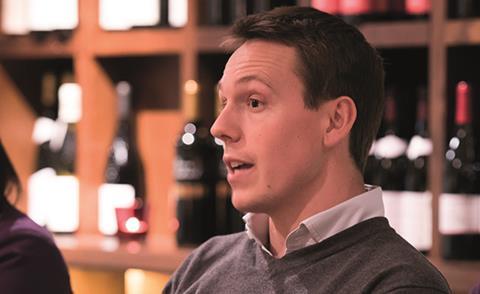
CG We have a cinema room. It does not make us as much money as other meeting rooms but that’s OK because people will more readily take the space because of it. A four-person business can use it. The irony is that we have created this [environment] and bigger corporates are now coming to us now and saying ‘we want our departments to work in a start-up environment’. Smaller businesses used to gravitate to larger businesses because that was good for business, there was this osmotic effect of being near the bigger business. That has reversed now. The bigger ones want to be around the smaller ones and they are putting whole departments in, which is fascinating.
Lucy Arthur (LA) From a landlord’s perspective [with] two multi-tenant buildings, we get occupiers saying they want amenities in the buildings. The office is a destination now, it’s not just an office. We have gyms, treatment rooms, nail bars, dry cleaning, cafés. There are Amazon lockers now, drying rooms and cycle facilities, all for the convenience of the occupiers. Not everyone uses them the whole time but occupiers are using them more and more.
Andrew Mawson (AM) It’s fascinating listening to this but I do think we get carried away with thinking about design and culture. We rarely talk about science. We need to ask what we are trying to achieve here. We should be standing back a bit if we want to get everyone to be at peak performance every day individually and collectively - and to do it in the most efficient way.
Three to four years ago we did a piece of research on what the biggest factors were affecting knowledge-based teams. The top one was social cohesion. Why? Because we want people to be generous with their knowledge. We come to work every day with knowledge and energy. We can either keep that to ourselves or we can be generous with it. If we don’t like the people we work with (or the other teams) we may hold back on that.
The second thing was the need to increase knowledge reach. The more people you know, the more information you have access to. We also want people to be comfortable enough to challenge each other in a positive context. The best way to do that is get people comfortable with each other. Social cohesion makes a huge difference to those things.
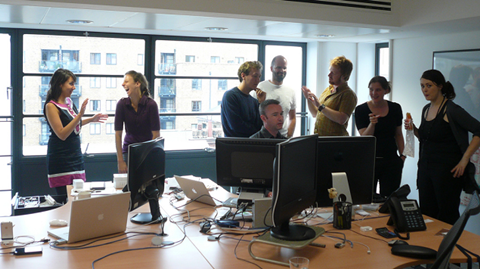
The second factor is supervisory support. We talk about getting people out of [private] offices and the traditional argument for that is that it insulates you from your team that can create the feeling that there is something going on that you don’t know about. So we should start to think about how you can create the conditions for supervisory support to happen. Trust is another big deal in the mix.
Vision and goal clarity also matters. I walk around a lot of offices every day and you would not know who is doing what and what their critical challenges are. It would also be fascinating to reveal how many people know each other. Many people have no clue who other colleagues are. I have a strong sense that people come in and do their bit with the people they do their immediate work with but have no contact with others on the same relatively small floor.
External communication also matters because it is an antidote to organisational arrogance. It’s about coming out of the team and then coming into work, bringing back fresh knowledge. Sometimes you get an organisation that has been particularly successful and they don’t want to know about other ways to do things.
Do you think most companies intrinsically understand these factors?
AM Well we touched earlier on how you measure productivity and we concluded that it is pretty much nigh on impossible using traditional methods. But if you understand through the science what the things are that do make a difference, what you can do is measure how well your team does them.
We’ve built a little tool that enables you to do that and it’s quite fascinating, because what the stats reveal is all these historical prejudices that people have. It might reveal they don’t talk to the IT guys or they don’t talk to those guys over there because something bad happened with them five years ago. The point is that you might have these beautifully cohesive teams but that they are at war with each other. Social cohesion matters just as much at this higher community level.
Andrew Bugg (AB) It’s an interesting point Andrew made about social cohesion. It’s something we have been addressing over the last eight years. One of the greatest barriers to businesses not achieving their best workplace is that decision-makers are probably not alert to changes that have happened since they were on the shop floor. Different functions operate in very different ways. One size does not fit all. What constitutes social cohesion among brokers is different to my building inspectors.
What has changed in [your] new offices?
AB One has been creating space that is central to the business, making that the heart of the firm. Everyone will come to meet there. On a practical level, the more people who know each other, that leads to a drastic increase in business.
We’ve reduced the number of meeting rooms we have by looking at what people do at different parts of the day and [instead] have lots of different working environments that take up less space than meeting rooms. We’ve been able to reduce the footprint of the desk space too because it’s no longer 100% of your working environment.
What about some of the other elements like gyms and so on. Is that something you have considered?
AB Well we have gone into a building with a gym. Important? No, not essential, although a lot of people do use it.
AM Interestingly I would have agreed with you on that about two years ago but I have changed my mind after another piece of research I have done, which is on cognitive performance.
This covers two areas. The first is the ability of the workplace not to distract you or to consume cognitive energy. The other is what you can do yourself if you want to be a cognitive athlete in terms of things like hydration and attitude.
Exercise is really important here along with nutrition and sleep. If you had asked me about gyms three to four years ago I would have said they are a nice-to-have. Now I would say exercise is an important aid to productivity.
Sometimes when I am speaking about this subject I ask people to stand up if they have done all these things. Only 3% are doing all the right things.
How can you measure this?
AB Productivity manifests itself in so many different ways. We became a more [appealing] business and staff retention improved but there are so many factors that contribute to that. [It could be] a nicer building or buying sit/stand desks. But too few business are willing to invest time in introspection, looking at what they do and why they do it [and instead just say] ‘we are not Google’.
Alison Quinlivan (AQ) There is a novelty factor here in climbing walls and bikes in the office. I don’t care if you have two screens on your desk that go up and down or if I can climb a wall at lunchtime - if the power is not on, that is the thing that is going to tick me off.
There has been a backlash against that kind of approach hasn’t there?
RG I was in Google’s San Francisco office a few months ago and it has really grown up. It is more homely and domestic these days.
AM One of the things I like about Google is that they have sat down and asked what people need and what they are trying to achieve. Their offices have a variety of well-thought-through spaces allowing people to carry out tasks effectively.
I think they have done a nice job in creating the right [working] conditions as opposed to simply copying what someone else has done.
Chris Piper (CP) I think that’s a really good point, Andrew. We get to work with lots of different organisation’s workplace experiences. Rarely are we involved at the design stage, sadly, but too many companies think ‘we will redesign the workplace and we will copy Google’. They should be asking what the functionality of workplace is and what science says about [creating] the spaces that enable the individual functions, and then design around that.
The other interesting factor for me is how organisations see the benefit of the actual service delivery in terms of delivering an experience to occupiers and visitors, how important is that versus the actual design of the building - I throw that in as another point of debate really - I am saying there is a lot of science behind what one can do to design a building and I see a lot of companies get it wrong because they copy someone else rather than thinking about the functionality of their own business.
CW We should not be copying the likes of Google but if they started to work with companies to put numbers on what is working, that would be interesting. If Google tried six things, as an occupier I would love to do every one. But it’s very likely that I wouldn’t be able to afford to, so I would narrow it down to which three I could do that were the most effective.
How do you evaluate the effect of the changes you make to the workspace?
CR What we do is surveys of employee satisfaction and [we look at the] responses we get back, like ‘it feels like working for a new organisation’, or managers reporting more impetus and enthusiasm. Some graduates say things like ‘I knew I wanted to work for your organisation 10 minutes after I walked in the door’.
So what makes a great workplace?
AQ A big part of it is about maintaining it properly. Facilities managers are usually low paid, inexperienced people who often don’t have the capacity to fix the things you need to do your job.
DH It’s really important. The facilities manager is more important to your health than your doctor, yet they don’t have the skills to manage the building.
Heating and energy use is another problem. We know as an institutional investment manager in property that our offices use twice as much energy as they should, but the tenants pay the bills, so it’s not addressed.
We have been told that the facilities managers get paid small amounts and do not have the skills to manage the maintenance and that’s across the whole industry.

It’s our fault [as occupiers] because we have asked for minimum costs. In four years we have been trying to get our agents to set the clock properly and we are still trying today. If they can’t do that, the chances of them making us comfortable are not great.
But there is a tsunami of change coming from tenants. Tenants have to get it into their leases and stop paying if they are not getting the comfort they want.
CG The dynamic has changed and it is being driven by the tenants. Unless landlords respond to these issues tenants will leave. Everyone sees it but they are resistant to it because they haven’t ever had to do it before. Landlords should embrace that new relationship. We see ourselves as working in the hospitality industry, not the real estate sector - that is the level of our engagement.
CW When there is an oversupply in the market and you have an ability to negotiate the heads of terms or walk away it will change.
DH In the hospitality sector you stop paying the service charge because of all sorts of technical reasons. In this industry we don’t have that partly because the industry is so de-skilled and all the engineers have gone. We don’t have the ability to advise on this but if we do up-skill the industry I think it will change and tenants will increasingly want to start writing these things into the leases.
CW The tenant representative industry is in its infancy compared to the US. There were two of us at JLL but that industry is evolving and people are getting more rounded advice now. When the market shifts there will be landlords that get left behind.
How far away are we from that point?
CW A long time but it will be tenant-led.
DH We have more tenants getting in engineers to test the environment and saying these [air-conditioning units] are not working properly. Perhaps we need a [well building certificate] that tells you that the water and air quality are correct.
Is a healthy environment a productive environment?
DH It’s very debatable. People can’t prove a link between someone who is happy and someone who is productive. Someone is more productive in a better culture than someone in a better building.
AM You want to give people the right conditions to flourish and comfort is important.
Jeff Flanagan (JF) I like the idea of a well building certificate so that what you take over is fit for purpose. You want engaged employees.
For me part of the answer is about personalisation. I am keen on the personalisation of the office environment.
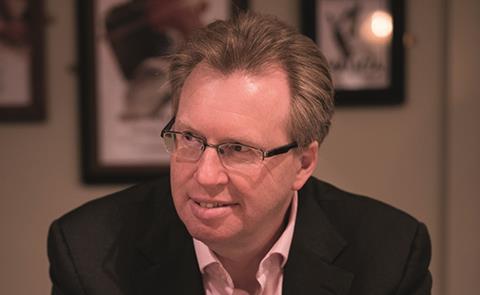
Can you dial up and down what’s important to you? Can you tailor it to be quieter, warmer or cooler?
People should have the ability to optimise what is important to them and in theory at least their level of engagement will go up.
AM This is where agile working and mobility come in. If you can work in different parts of the office then you have the ability to choose which is the most appropriate for your task and the temperature that is most appropriate to you.
We have been doing work in the States and the drive there is to agility and to greater collaboration. Here the driver is still economic. Agility gives you the chance to work with different people and to choose the space that is right for you. We are all different. We want control and we can have that by choosing the place we work in.
JR Most of the conversation around this table has focused on big businesses that can afford consultants for designs, and have well qualified people to think about these issues.
The number of companies who have under five employees makes up the overwhelming majority of businesses and they don’t have the budget to do very much beyond creating a functional environment. It’s easy to talk about creating social cohesion but that is something only a minority have the luxury of thinking about.
AM But social cohesion is easy when you are a small business.
JR At most small businesses I have come across when I visit their workplace the key focus is about clients not employees. They spend money on meeting rooms and reception to improve the external perceptions.
What learnings can be adopted by SME workspaces?
Gavin Kamara (GK) We have nine people, a small office and not a lot of money to put into it. Improvements could be simple things like bringing a dog into the office.
AQ Can I ask what we are doing with office design to encourage diversity? I’m really not sure that is taken into account.
LA Some do take it into account. [One of our] multi-tenanted offices is turning a room into a prayer room because they had so many people who work for them who would make use of it.
AB Most companies we work with all have these things on the list at some stage but they look at supply and demand. Rooms for wellbeing of different types are becoming more common, such as rooms for breastfeeding or rooms where you can go to lie down.
DH Will they be prepared to rent any more?
AB It’s very much left to tenants to decide what they want to do with the space. In the past 10 years has cycling has become important. It’s a given now.
DH We have taken out car parks and given them over to cycle facilities.
LA We have 220 cycle spaces, we cannot fill car parking spaces and the cycling spaces are full. Everyone wants more facilities - everyone wants a locker.
In London it is all about cycling. In Birmingham there’s more demand for driving although we are seeing it change slightly there, too.
OK, we need to wrap up. Final question: what would be the one thing people would change to enhance the occupier experience?
AM You have to be clear what you’re trying to achieve, who you’re trying to recruit, what you want to get out of them, how to reflect your personality in the experience. Get a bunch of people to think how you reflect all those things and design backwards from there.
And think holistically. We have to start looking at the whole thing. No single individual in any company I have come across is responsible for all the company in helping individuals be the best they can be.
DH Train facilities managers properly and pay more for them. We can double their money and save money by getting more energy efficiency and people could be comfortable at the same time. We asked JLL to increase service in this area and we are paying more because we are seeing the benefit.
LA There’s also an element of marketing [needed] here from a landlord’s perspective. There is a barrier between what you want tenants to know and the facilities manager who doesn’t spread the word. I speak to tenants and they don’t know there is a gym or a café. When you’re trying to create a community in the building with things like table-tennis competitions or wine quizzes and no one knows, that’s a big thing.
CW Learn. Get the metrics on what works, when you fit out a 10,000 sq ft floor you can’t just burn money trying new stuff. Learn things from those who succeed.
AQ There has to be a way to do employee surveys in companies each day. It could be something as simple as smiley faces to show what your experience was like today. That can tell you if the atmosphere is improving and then you can react to it more quickly. Senior people don’t really know what it’s like because they are out of the office a lot. People who are more junior will vote with their feet.
JR Engagement is crucial and everyone needs to be involved. It’s not just a top-down thing. It’s also crucial to find the distinction between what is distraction [and what is productive].
Phones and internet are the greatest distraction that all of us have but you can’t really control these things as it’s a personal liberty issue.

How you manage that and create the right atmosphere is a big equation no one seems to have tackled particularly well.
MR We talked a lot about facilities managers and personally I think they are too preoccupied with firefighting, changing lightbulbs and not thinking about the future. We have drones that wash windows, I can book a flight on my phone but how many people can book a meeting room on their phone? It’s crazy that we don’t use technology for self-service.
GK It goes beyond employee engagement, too. It’s also about landlord engagement. The ones that come out of the downturn stronger will be the ones whose landlords see their role as a partnership.
DH It’s quite ironic that occupiers are paying service charges. We have to change the terminology. It’s occupiers and owners now, not landlords and tenants.
AB I would say educating senior management and key decision-makers to understand what their people do, educating them about the choices they can make at the point where they are making those strategic decisions.
We have heard that one or two large occupiers are trying to get some of these issues dealt with in the lease, but only a few. If every tenant is educated then landlords will
have to respond to that.
LA It’s about flexibility for me. Where tenants have strict working hours it limits employee options. We had 10 staff using the gym, then 100, because at lunchtime people could use the gym. They had that flexibility because they were more free to choose their working hours.
LH Thank-you so much everyone, it’s been fascinating.
ABOUT THIS FORUM…
This event was chaired by Property Week’s editor Liz Hamson and took place on 25 November 2016 at Vinoteca, 15 Seymour Place, Marylebone, London W1.
If you are interested in hosting or participating in future events, please contact Niki Kyriacou, events & client solutions sales director, Property Week.
Tel: +44 (0)20 8253 8692 | Email: niki.kyriacou@propertyweek.com
In association with:

























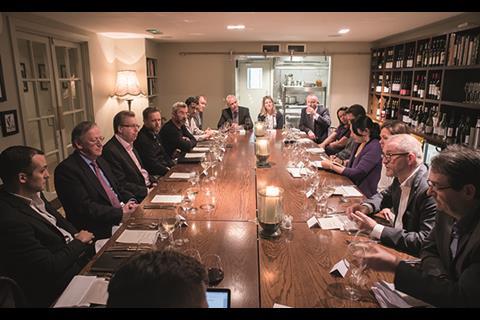





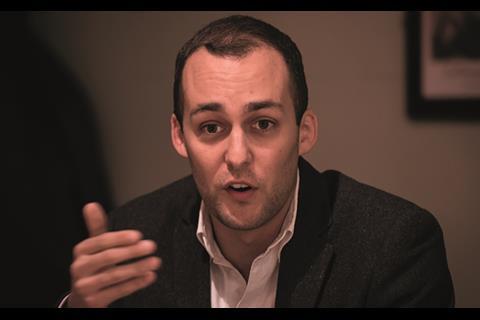
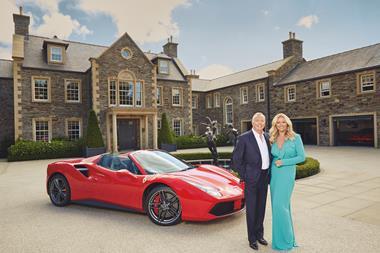





No comments yet